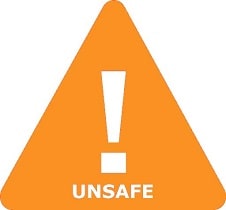Is EINECS 289-837-2 Safe in Breastfeeding
Question
I am a breastfeeding mother and i want to know if it is safe to use EINECS 289-837-2? Is EINECS 289-837-2 safe for nursing mother and child? Does EINECS 289-837-2 extracts into breast milk? Does EINECS 289-837-2 has any long term or short term side effects on infants? Can EINECS 289-837-2 influence milk supply or can EINECS 289-837-2 decrease milk supply in lactating mothers?
EINECS 289-837-2 lactation summary

- DrLact safety Score for EINECS 289-837-2 is 5 out of 8 which is considered Unsafe as per our analyses.
- A safety Score of 5 indicates that usage of EINECS 289-837-2 may cause serious side effects in breastfed baby.
- Our study of different scientific research indicates that EINECS 289-837-2 may cause moderate to high side effects or may affect milk supply in lactating mother.
- Our suggestion is to use safer alternate options rather than using EINECS 289-837-2 .
- It is recommended to evaluate the advantage of not breastfeeding while using EINECS 289-837-2 Vs not using EINECS 289-837-2 And continue breastfeeding.
- While using EINECS 289-837-2 Its must to monitor child for possible reactions. It is also important to understand that side effects vary largely based on age of breastfed child and time of medication in addition to dosage.
- Score calculated using the DrLact safety Version 1.2 model, this score ranges from 0 to 8 and measures overall safety of drug in lactation. Scores are primarily calculated using publicly available case studies, research papers, other scientific journals and publically available data.
Answer by Dr. Ru: About EINECS 289-837-2 usage in lactation
Petals and herb seeds are used.Components are: Isoquinoline alkaloids (Rhoeadine), polysaccharides and anthocyanins.Attributed properties: antitussive and slightly sedative.Indications according to the Commission E of the German Ministry of Health: none. At latest update no published data on excretion in breast milk were found. It has been used since antiquity to sedate children in many culturesPoisoning has occurred by using it. Because of sedative properties only a moderate and occasional use would be compatible with breastfeeding, out of the neonatal period with close monitoring for the occurrence of sedation or loss of appetite by the infant.
